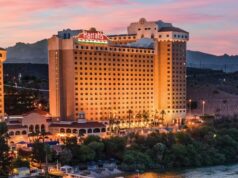NATIONAL REPORT—At a time of low occupancies caused by COVID-19, spending money on upgrades other than those related to cleaning and maintenance is likely not a priority. At least one company, however, is offering a “pay as you save” program that makes investing in LED lighting upgrades very enticing.
“Through our ‘pay as you save’ program, it is zero down with very low interest rates. In most cases reductions in lighting costs are greater than the cost of the new lighting,” says John Hutchcroft, V.P. of Field Development, YellowBlueLED. “For the most part they are immediately cash flow positive and getting significant rebate dollars as well. We helped a Holiday Inn with 198 rooms reduce their overhead by $31,000 per year by installing LED lights in all common areas, parking lot and exterior. The best part was they were able to do it without using any capital investment. They were so impressed with the results they immediately asked us to install LED lights in four more locations.”
Thanks to LED installations and rebates at three Iowa hotels YellowBlueLED worked with, combined annual savings was $51,516. Two of the properties were Holiday Inn branded; one was a Comfort Inn & Suites.
Zero Percent Interest
Hutchcroft says his company is currently offering zero percent interest for three years. 1.9 percent for four years, and 2.9 percent for five years.
In a typical lighting upgrade, lights that are on 12 to 24 hours a day are targeted first—common areas, lobbies, offices, exterior lighting, parking lot lighting.
“On average we are reducing the lighting percentage of the electricity bill by 60 percent,” Hutchcroft says.
Streamlined Installation Process
Hutchcroft says his company puts in high-quality LEDs and acts as a design and energy consultant for the hotel owner who may not be familiar with the intricacies of lighting—color temperature, for example. “We are familiar with brand requirements and with style and lighting temperature,” he says. “We also take care of the rebate application process for them and offer advice regarding available tax deductions.”
It is not just a reduction in electricity costs that comes with a transition to LEDs. “There is also a reduction in maintenance costs,” Hutchcroft says. “Instead of replacing bulbs every three to five years, it is now only 15 to 20 years. You are also eliminating the ballasts.” Gone too are the safety concerns of fluorescents—the low levels of mercury that require the bulbs to be properly recycled. Costs associated with air-conditioning also fall because LEDs give off far less heat than incandescent or fluorescent bulbs.
There is some belief that most of the U.S. hospitality industry has already transitioned to LEDs. Hutchcroft says, however, that only about 20 percent have done so. “Hospitality is within that 80 percent that has not,” he says. “They see it as being an expense. As we are proving, however, it is not. They take money that typically goes to the utility company and redirect it to lighting.”
Glenn Hasek can be reached at greenlodgingnews@gmail.com.






